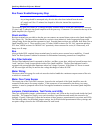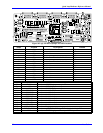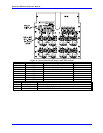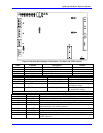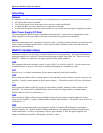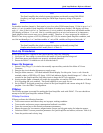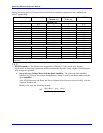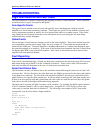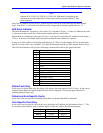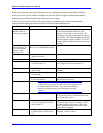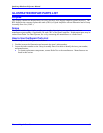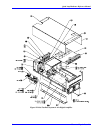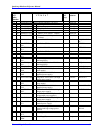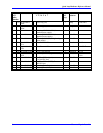
Quad Amp Hardware Reference Manual
Troubleshooting 29
TROUBLESHOOTING
Logic Fault Detection and Fault Codes
The Quad Amplifier is capable of detecting and reporting a variety of fault conditions. These conditions
are broken into two types: axis-specific and global.
Axis-Specific Faults
This type of fault is related to one axis only and typically is not something that would prevent the
amplifier as a whole from continuing to operate. These faults are specific to the modules or motors and
involve temperature (module or motor), low level ground fault, and over or under current. These faults
only disable the axis involved (when they occur and remain active), preventing the axis from being
enabled until they actually disappear.
Global Faults
The second type of fault concerns elements critical to the entire amplifier. These faults include heat-sink
over-temperature, general power supply faults, bus over-voltage etc. These faults are transient and are
latched in the Xilinx gate. The entire amplifier is disabled and remains so, with the fault displayed, until
the controller attempts to re-enable it. If the cause of the fault has been remedied, the fault is cleared from
the display and PWM is sent to the IGBT modules. If the cause of the fault has not been removed, the
amplifier will fault again and disable.
Fault Reporting
Fault conditions are reported in two places. First, the on-board (current sense board) LED displays the
fault code as a hexadecimal digit. Second, the fault code is attached to the end of the serial A/D converter
data stream being sent to PMAC2 on the A channel of each axis. There is also a fault LED associated
with each axis that will illuminate in the case of a fault on the associated axis.
Serial Fault/Status Data
The fault/status circuitry will add six bits to the serial data stream following the twelve bits of serial A/D
converter data. The first four bits is the 4-bit fault code; the fifth bit is reserved for the future and sixth bit
is the shunt active status bit. The 4-bit fault code sent back to PMAC2 for each axis could reflect either
global faults or axis-specific faults on that axis. It will not reflect an axis-specific fault from another axis.
If there is an axis-specific fault and a global fault, the code of the axis with the fault will show the global
fault (due to the rule of the higher fault number being reported).
The fault code is accessed in PMAC2 memory via M-variables. For example, the RAM register location
X:$0710 contains Channel 1 ADC1A input image value. Assign M130->x:$0710,8,4 to access 4-bit
values only, to read the fault code for channel #1. The following is an example of a PLC that would
continuously scan for a Bus under voltage condition.
Close
Delete Gather
M130->x:$0710,8,4
;
Open plc 1
Clear
If (M105=12)
Send “Bus under voltage fault”
Dis plc 1
Endif
Close



